Install Jira Using Docker Compose
This article is for those looking for a detailed and straightforward guide on installing Jira using Docker Compose.
Jira is a proprietary issue tracking product developed by Atlassian that allows bug tracking and agile project management.
💾 You can find the repository used in this guide on GitHub.
We’ll use Traefik as our reverse proxy. It’ll handle obtaining cryptographic certificates from Let’s Encrypt for your domain names and route requests to the corresponding services based on those domains.
❗ To obtain cryptographic certificates, you will need A-type records in the external DNS zone, which point to the IP address of your server where Traefik is installed. If you have created these records recently, you should wait before starting the installation of the services. Full replication of these records between DNS servers can take from a few minutes to 48 hours or even longer in rare cases.
In this guide, we will consider the case where you already have a server with Ubuntu Server 22.04 LTS installed on it.
You can find detailed information on how to install Ubuntu Server 22.04 LTS in my guide “Install Ubuntu Server 22.04 LTS”.
Docker Engine and Docker Compose must also be installed on the server.
You can learn how to install Docker Engine on Ubuntu Server by reading Install Docker Engine and Docker Compose on Ubuntu Server”.
In addition, OpenSSH must be installed on the server, and port 22 must be open in order to be able to connect to the server using the SSH protocol.
To install OpenSSH on the server you can use the command:
sudo apt install openssh-serverIf you plan to connect to the server using the Windows operating system, you can use PuTTY or MobaXterm.
This guide covers connecting to the server using the terminal emulator iTerm2, installed on the macOS operating system.
💡 Please note, you will need to open the following TCP ports for access to the services:
- TCP port 80 - to obtain a free cryptographic certificate through the Let’s Encrypt certification center.
- TCP port 443 - to access the Jira web interface.
We connect to the server on which Jira is planned to be installed.
Now it is necessary to create networks for your services.
We create a network for Traefik using the command:
docker network create traefik-network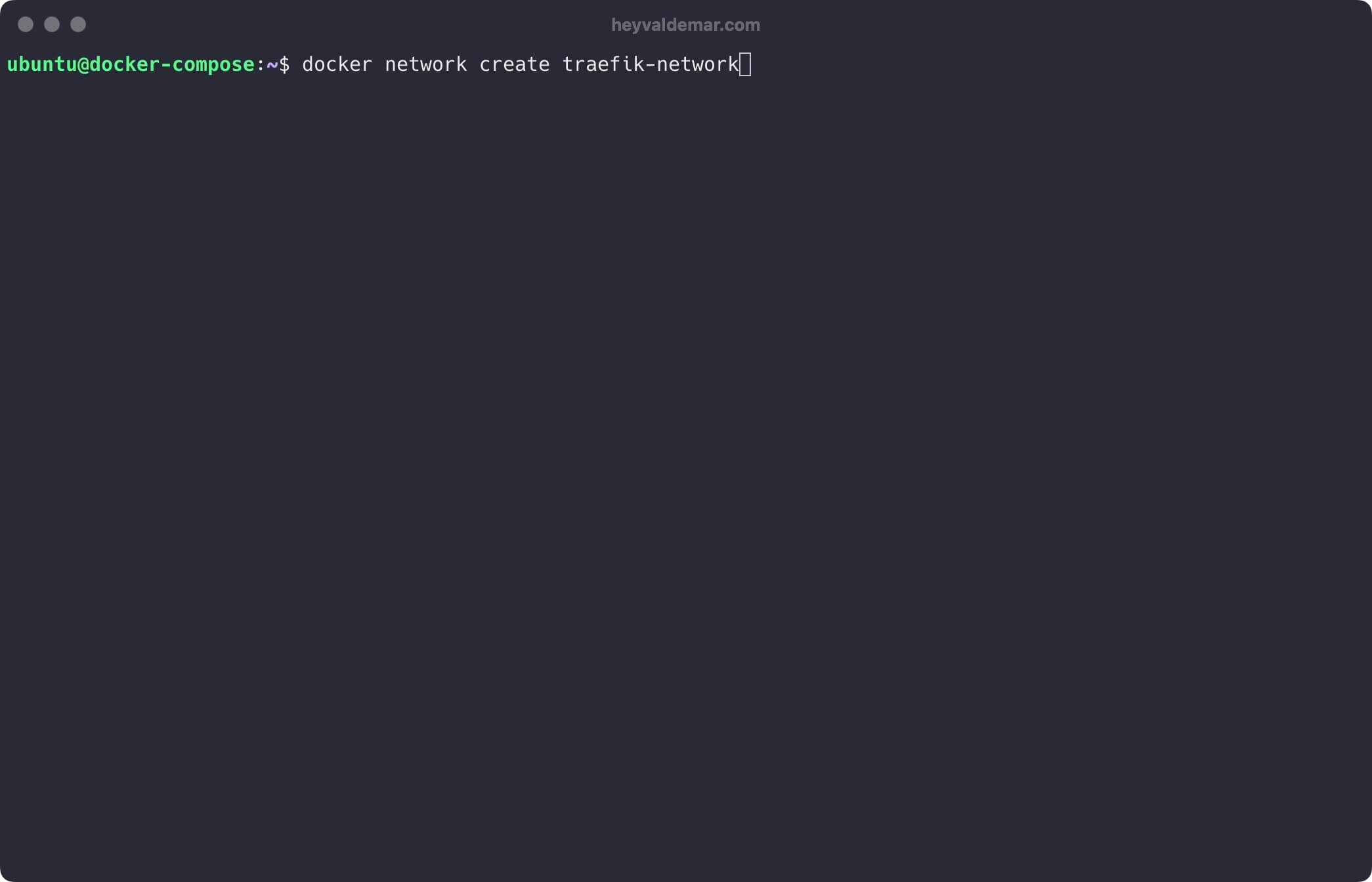
We create a network for Jira using the command:
docker network create jira-network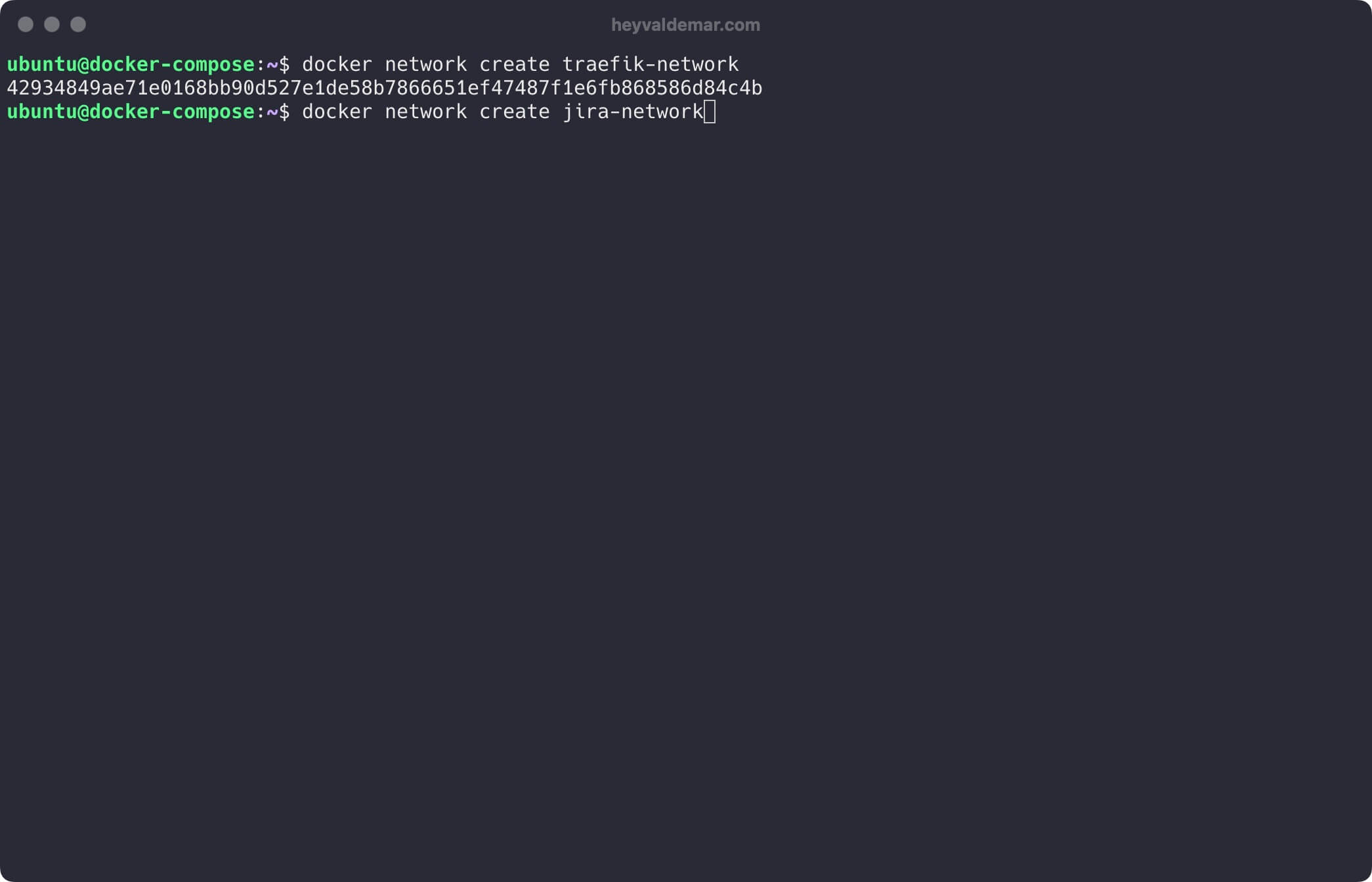
Next, you need to clone the repository that contains the configuration files, which include all the necessary conditions for Jira to work.
You can clone the repository using the command:
git clone https://github.com/heyvaldemar/jira-traefik-letsencrypt-docker-compose.git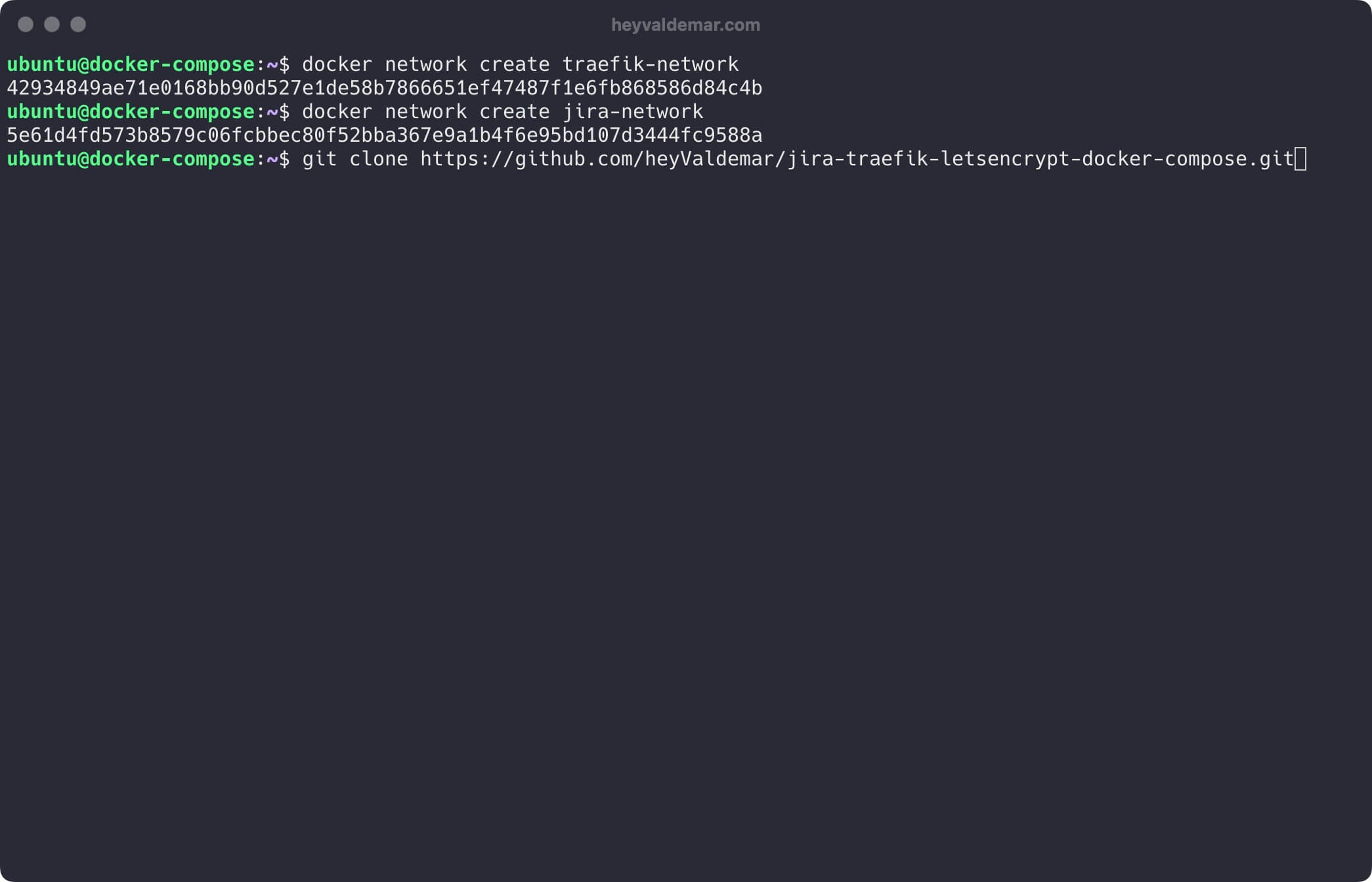
Navigate to the directory with the repository using the command:
cd jira-traefik-letsencrypt-docker-compose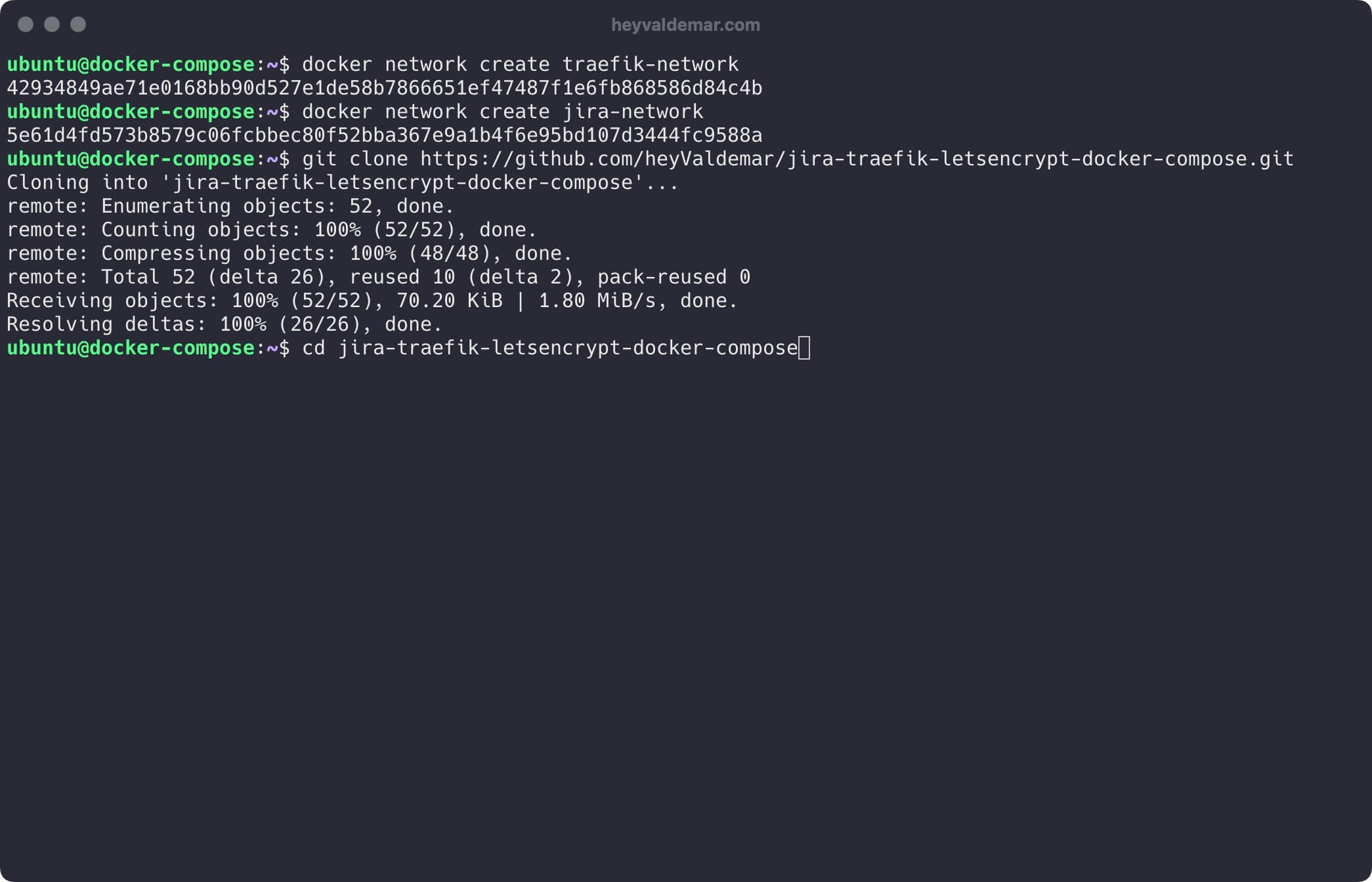
Next, you need to change the variables in the .env file according to your requirements.
💡 Note that the .env file should be in the same directory as jira-traefik-letsencrypt-docker-compose.yml.
Now let’s start Jira with the command:
docker compose -f jira-traefik-letsencrypt-docker-compose.yml -p jira up -d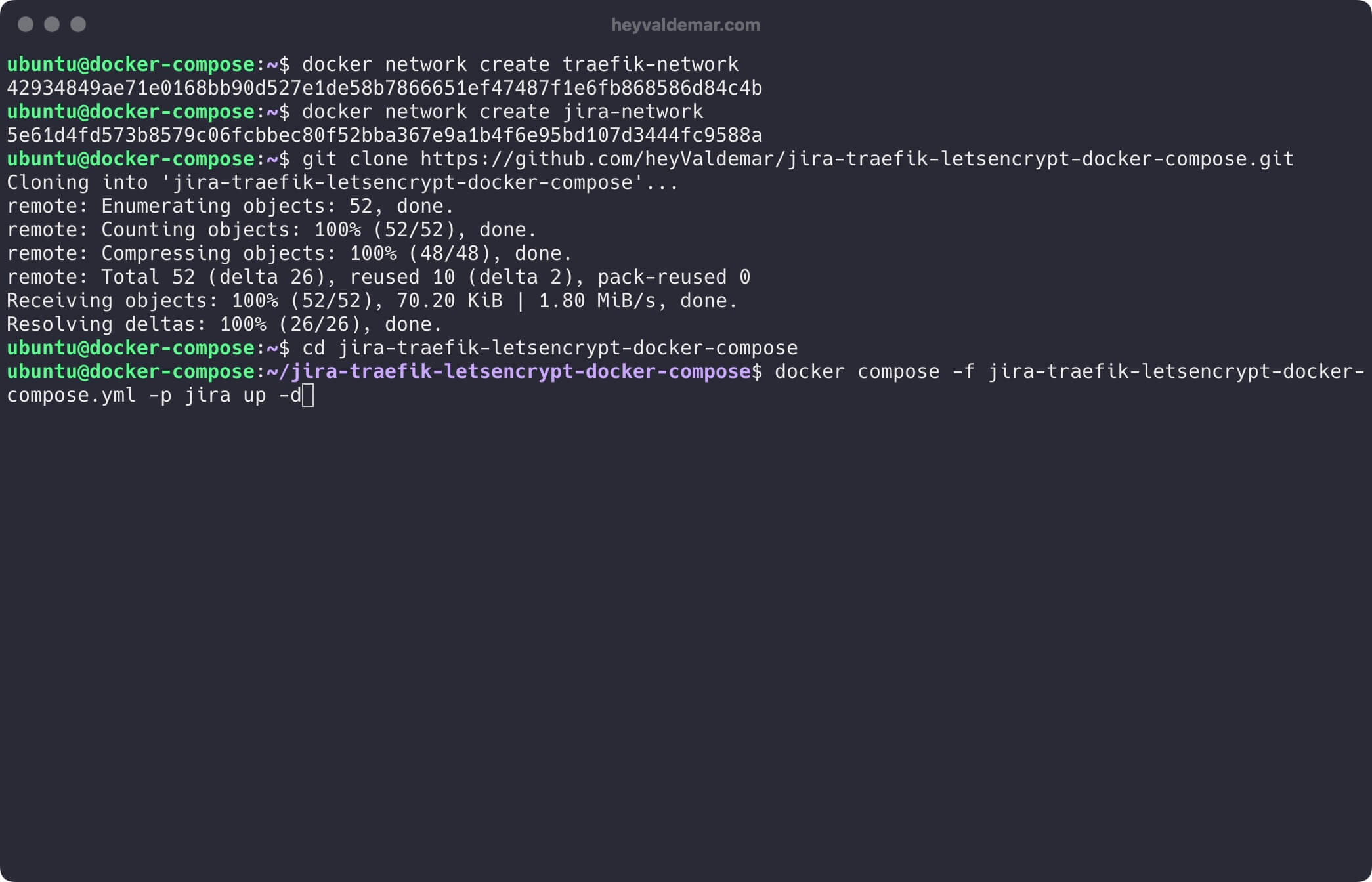
To access the Jira management panel, go to https://jira.heyvaldemar.net from your workstation, where jira.heyvaldemar.net is the domain name of my service. Accordingly, you need to specify your domain name that points to the IP address of your server with the installed Traefik service, which will redirect the request to Jira.
💡 Note that you need to specify the domain name of the service, previously defined in the .env file.
You’ll now need to enter a license key for Jira.
If you don’t have one, you can obtain a temporary key to test out Jira.
Click “Get an evaluation license” to proceed.
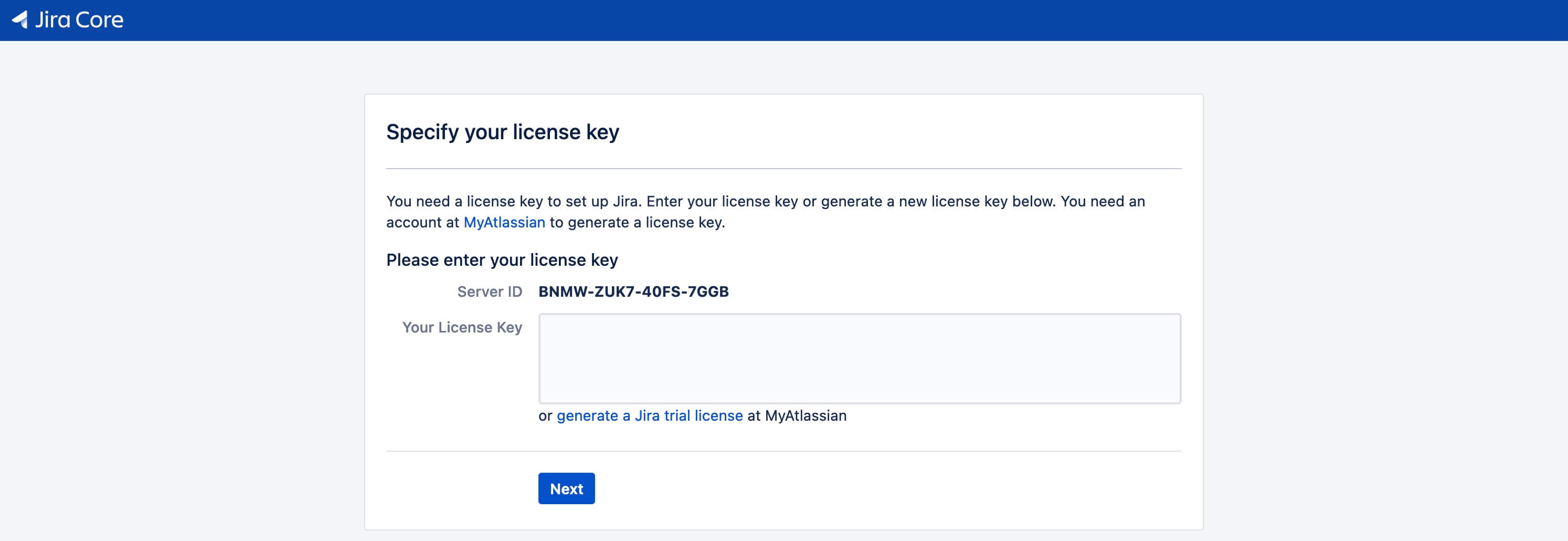
If you possess an Atlassian account, input the email address linked to that account in the “Enter email” field, then click the “Continue” button.
Enter the password for your Atlassian account and click the “Log in” button.
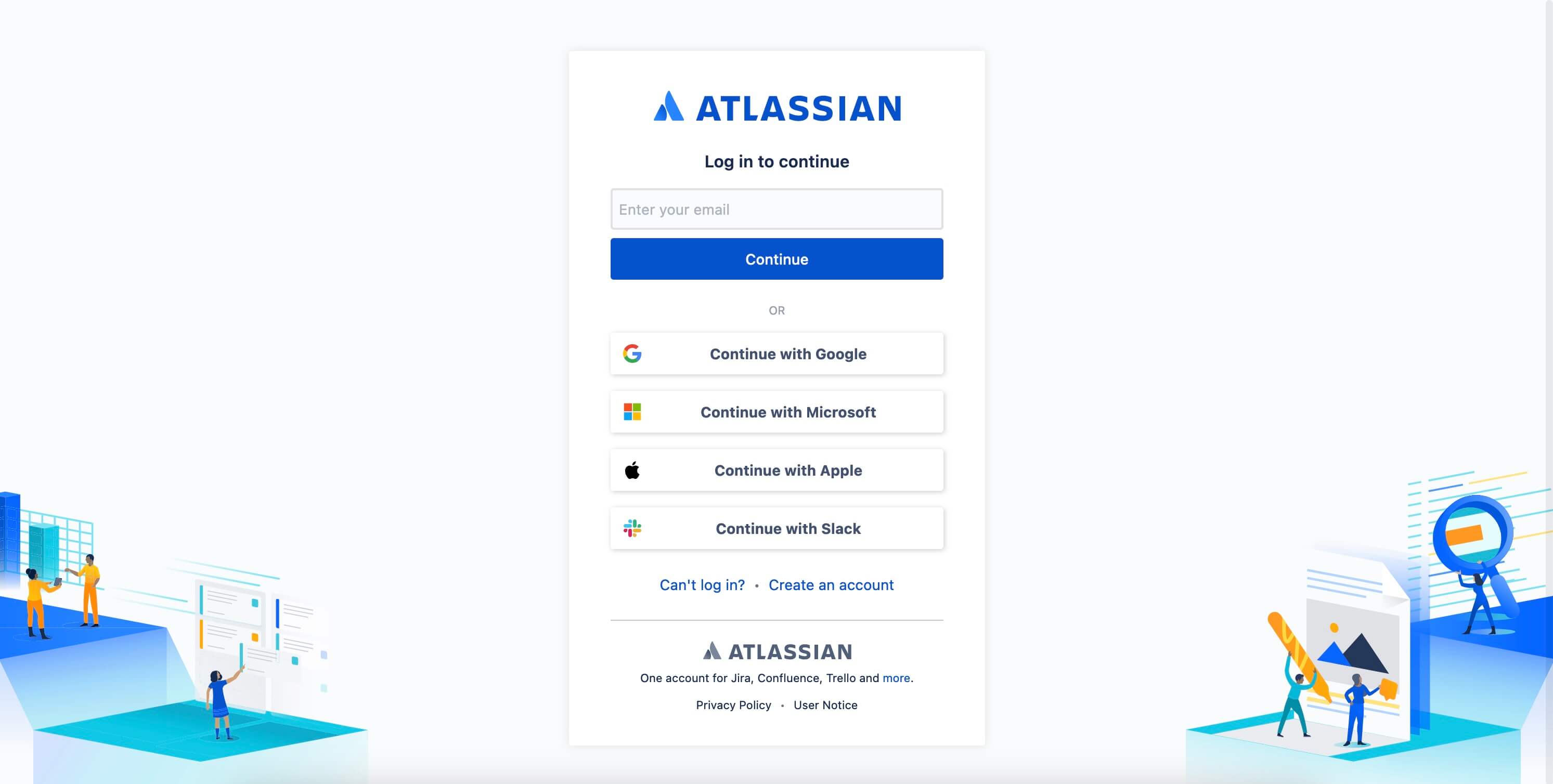
For the next step, indicate the product you need a temporary license key for and enter your organization’s name.
Click the “Generate License” button to secure a temporary license for Jira.
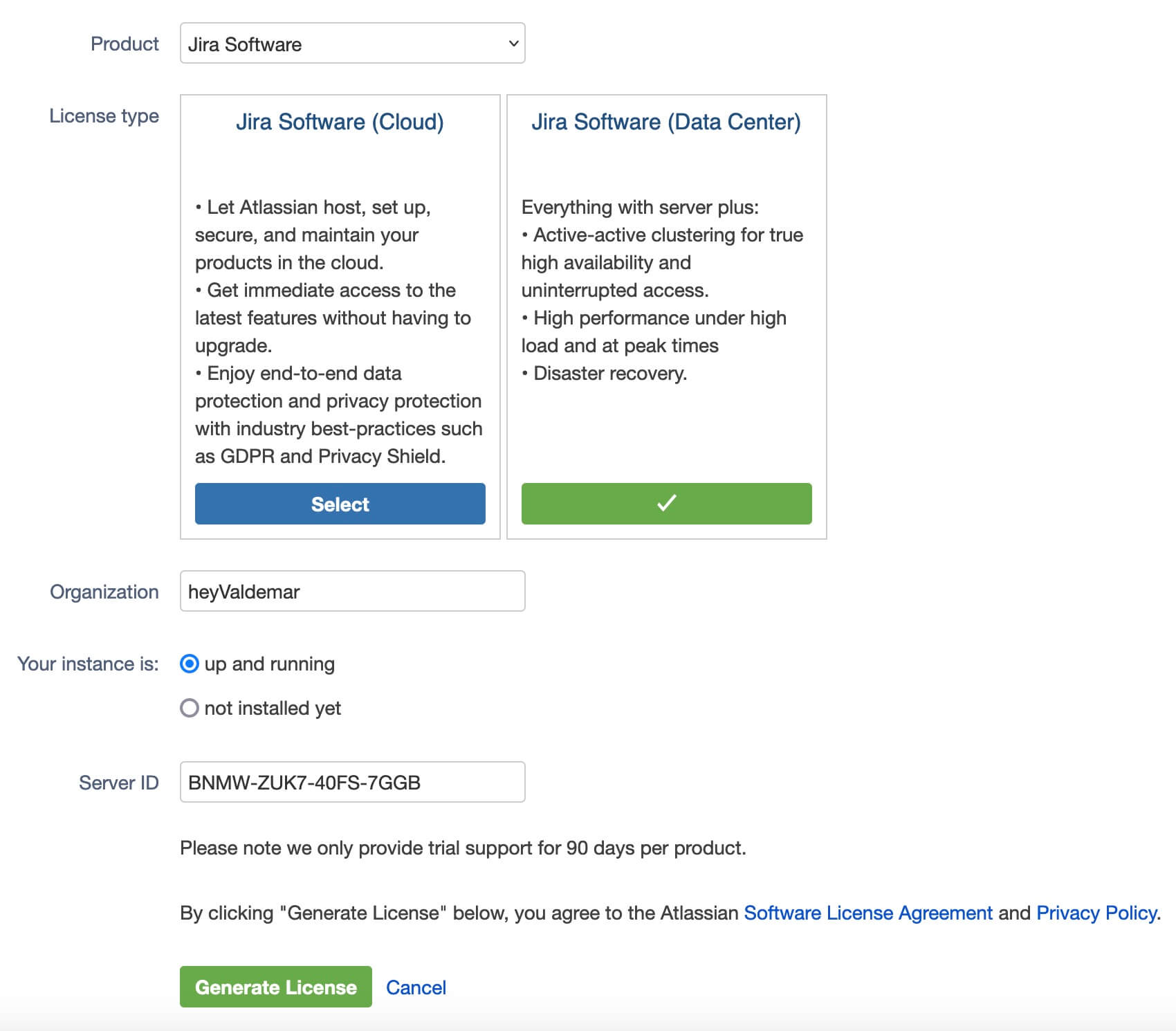
Next, you’ll need to confirm the installation of the temporary Jira license key on your server.
Click the “Yes” button to proceed.
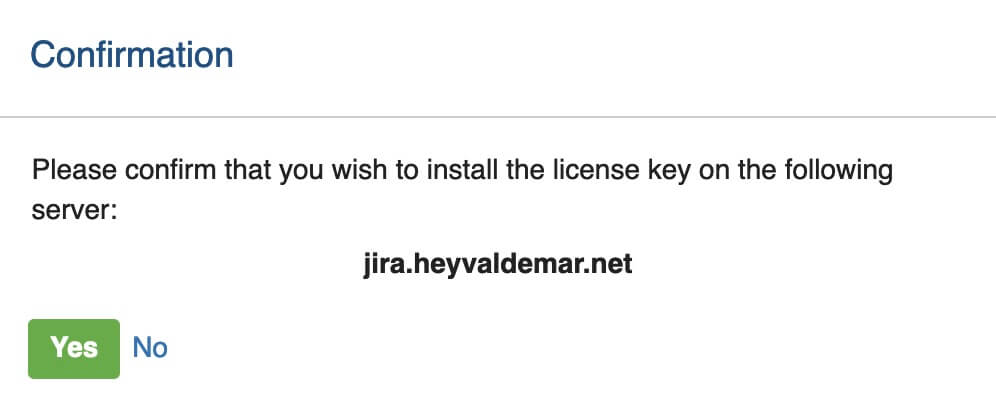
In the “Your License Key” field, enter the temporary license key you received earlier and then click the “Next” button.
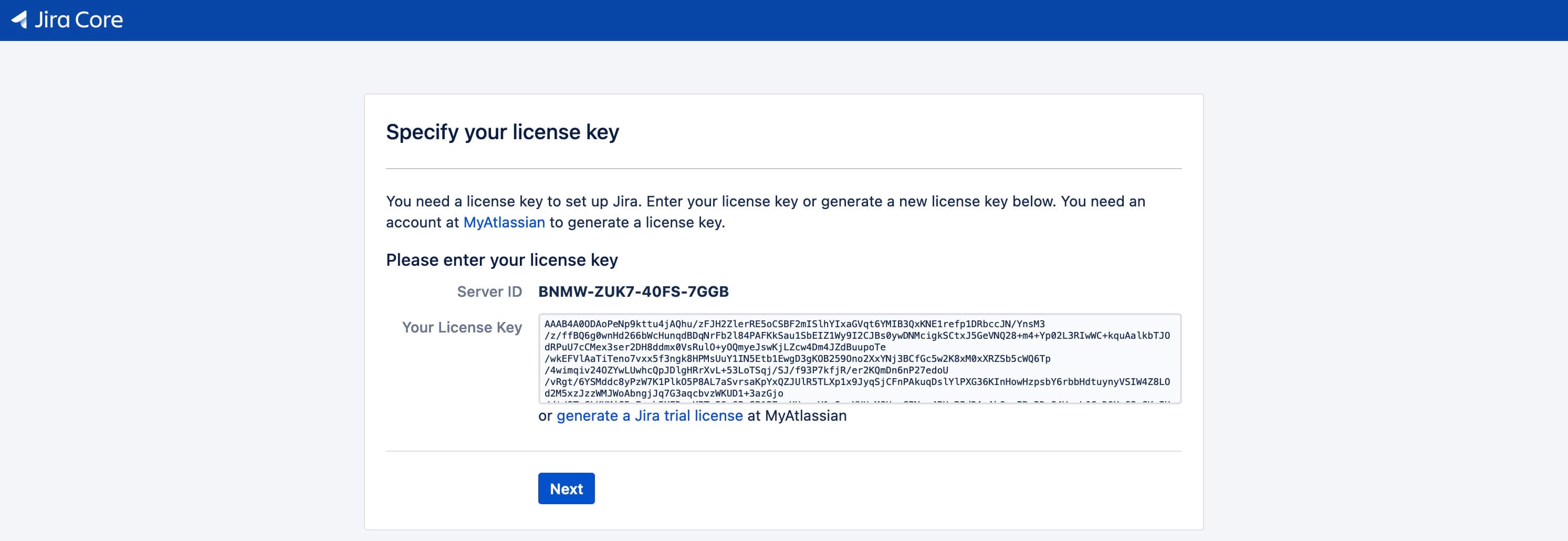
For the next step, please enter your username, name, email address, and password to set up a Jira administrator account.
Click the “Next” button to continue.
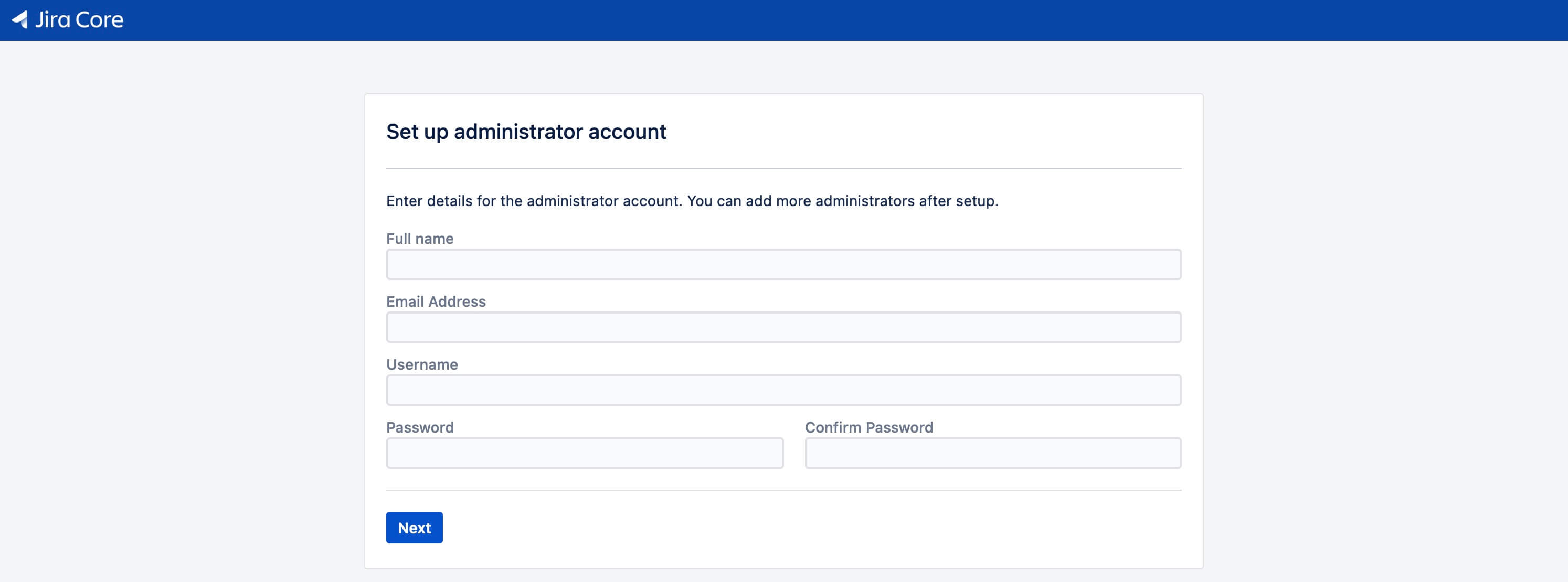
Choose “Later” if you wish to configure email notifications at a later time.
Click on the “Finish” button to proceed.

Select your preferred language and then click the “Continue” button.
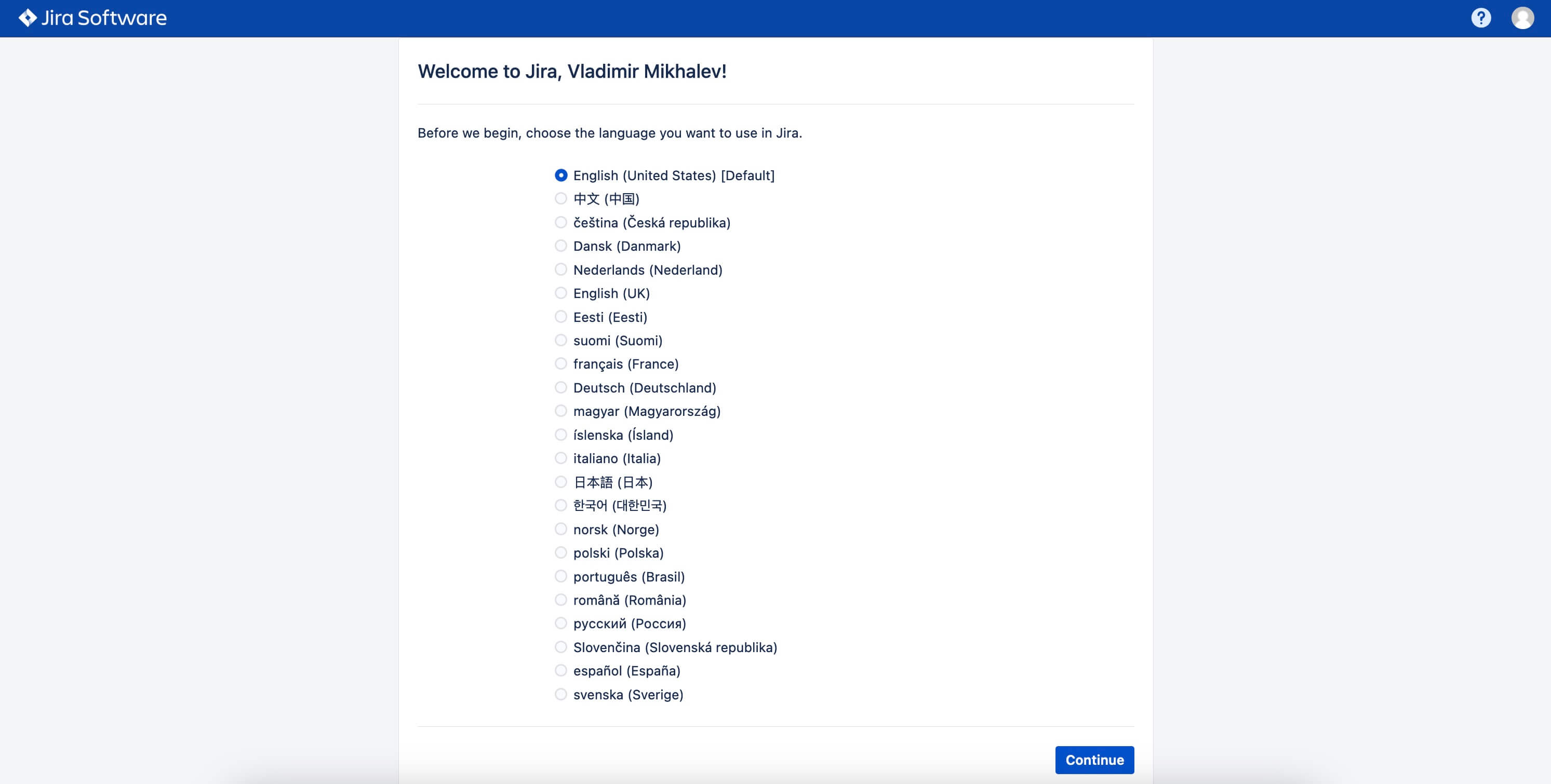
After selecting your avatar, click the “Next” button.

Jira is all set and ready to use.

To access the Traefik control panel, go to https://traefik.jira.heyvaldemar.net from your workstation, where jira.zabbix.heyvaldemar.net is the domain name of my service. Accordingly, you need to specify your domain name that points to the IP address of your server with the installed Traefik.
💡 Note that you need to specify the domain name of the service, previously defined in the .env file.
Enter the username and password previously set in the .env file, and click the “OK” button.

Welcome to the Traefik control panel.
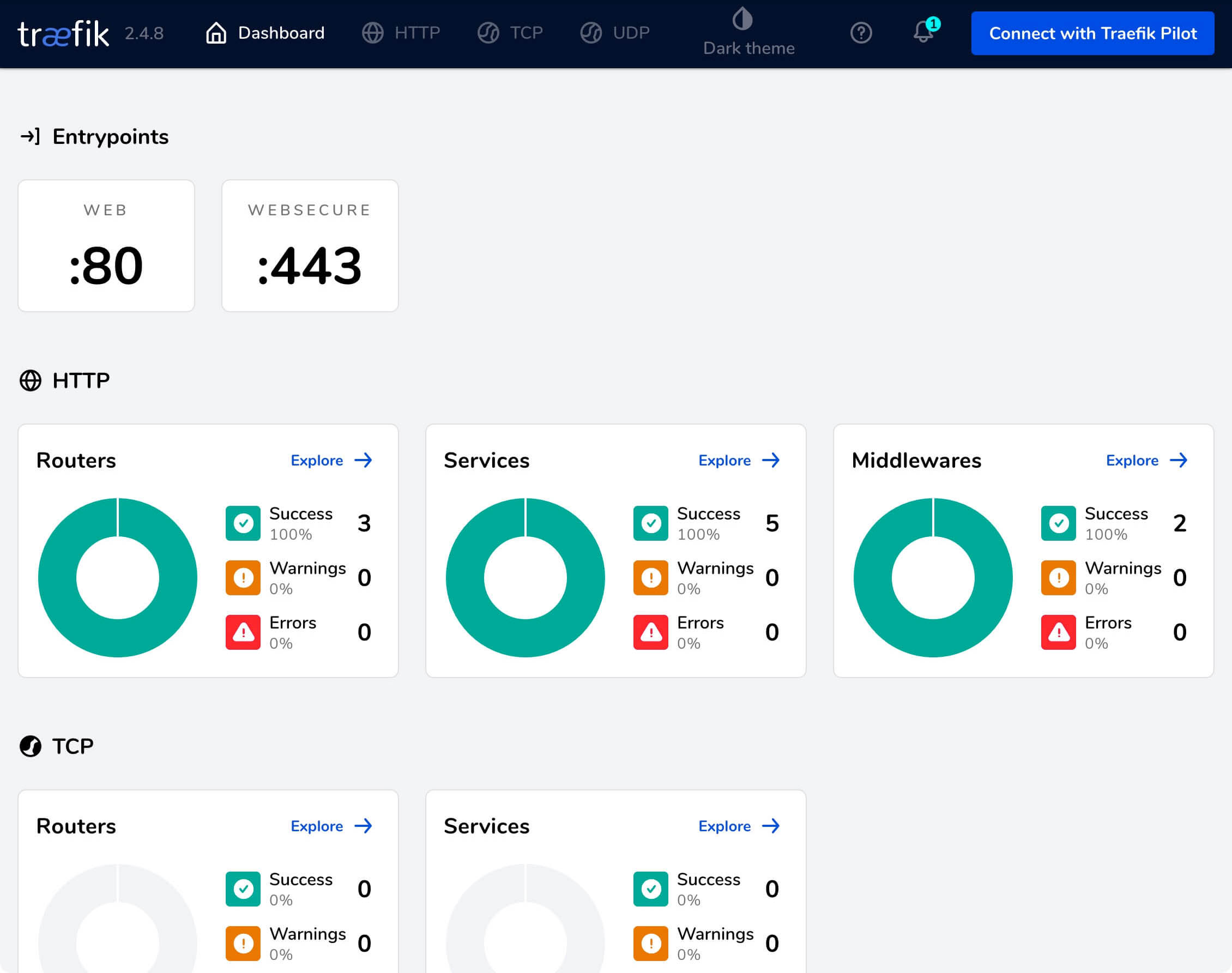
Follow Me
🎬 YouTube
🐦 X / Twitter
🎨 Instagram
🐘 Mastodon
🧵 Threads
🎸 Facebook
🧊 Bluesky
🎥 TikTok
💻 LinkedIn
📣 daily.dev Squad
🧩 LeetCode
🐈 GitHub
Community of IT Experts
👾 Discord
Is this content AI-generated?
Nope! Each article is crafted by me, fueled by a deep passion for Docker and decades of IT expertise. While I employ AI to refine the grammar—ensuring the technical details are conveyed clearly—the insights, strategies, and guidance are purely my own. This approach may occasionally activate AI detectors, but you can be certain that the underlying knowledge and experiences are authentically mine.
